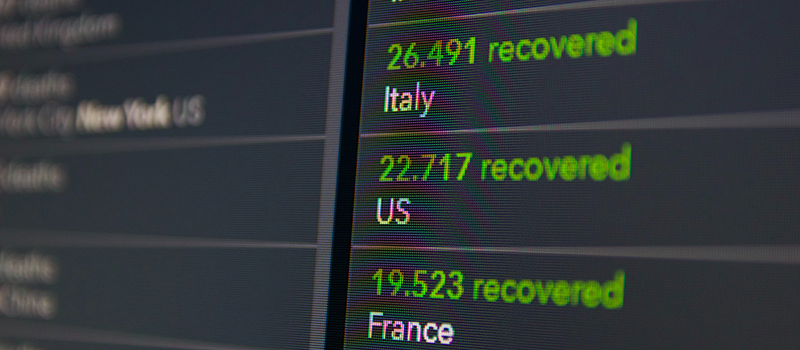This blog was written in collaboration with Sandy Carter, Vice President, AWS Worldwide Public Sector Partners and Programs
During the COVID-19 pandemic, government agencies are generating massive amounts of data – data that those working on the frontlines can use to track the spread of infections, predict where medical services will be most needed, analyze supply chains, develop effective treatment protocols and eventually produce a vaccine.
To be actionable and useful in the midst of the crisis, this data needs to be analyzed and quickly shared with the people who need it. However, in some cases, this data is spread across different organizations making it difficult to sort through.
Cloud-based solutions, such as artificial intelligence (AI) and machine learning (ML), are useful tools for extracting patterns and insights from data quickly and accurately. The cloud also helps organize data in data warehouses and facilitates the integration of data through data lakes. As an example, the AWS COVID-19 data lake stores curated datasets related to the spread and characteristics of the virus – including case tracking, hospital bed availability, and other data from reliable sources. This data lake is publicly available and gives scientists and health authorities access to the most up-to-date data.
Many government agencies are realizing the potential of cloud technology to help them make data-driven decisions during the pandemic, and members of the AWS Partner Network (APN) are responding with solutions designed to support these crisis management efforts.
Here are a few examples of how APN Partners are collaborating with public sector organizations to analyze data and share information:
- Data Visualization & Analysis: To assist in the COVID-19 response, the Federal Emergency Management Agency (FEMA) is providing state, local, tribal and territorial governments with access to Esri’s geographic information systems (GIS) software. Esri’s GIS enhances data gathering, sharing, visualization, and analysis. It also underpins real-time dashboards that have proven to be central in providing an at-a-glance awareness of the current state of the disease’s spread.
- Predictive Data Modeling for Asset Deployment: Novetta’s AGEON is a real-time web application that enables users to use geolocation and open source data (i.e. from sensors and video feeds) to track the physical spread of COVID-19. The solution also uses ML models built on AWS to help users proactively predict where to deploy critical assets.
- Crisis Response Information & Communications: Atlas One is a crisis response communication network that informs, educates and prepares communities for pandemics with fact-based government information. Its global health and safety mobile app allows government organizations to publish real-time information to their communities, such as alerts, interactive maps, directories and links to official government resources.
- Emergency Room Resource Management: To help manage the Emergency Department, as well as other departments within hospitals, Leidos developed the careC2 Command Center. This solution collects data at every stop on a patient’s journey and recommends in real-time where and when staff, beds, or equipment are needed or excessive. This helps administrators and clinicians redeploy resources and make the best decisions to improve patient care, safety, and satisfaction.
- Testing, PPE and Back to Work Solutions: Domo provided the State of Utah with a comprehensive, real-time dashboard to help with the COVID-19 response. The State of Utah has successfully implemented Domo’s COVID-19 Crisis Command Center to gather critical data, track the spread of the virus, dramatically increase testing throughout, and ultimately put data in leaders’ hands to help them make decisions in these critical times.
Learn more about the full range of APN Partner solutions and how they can help your agency on the APN website.






[…] in helping health care providers manage the response to COVID-19. Here are a few examples of how APN Partners are providing that […]